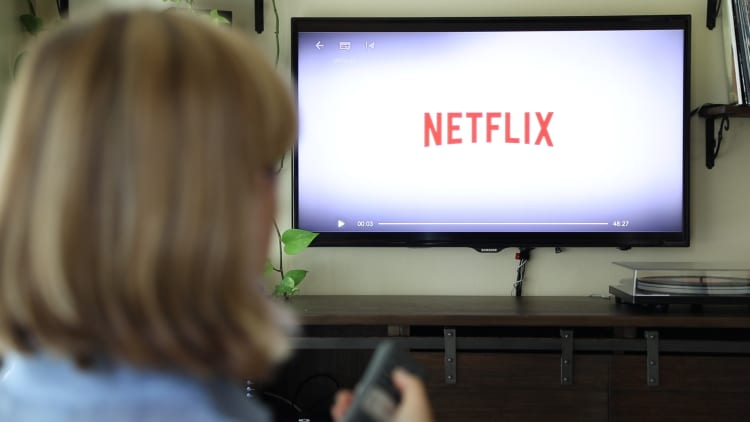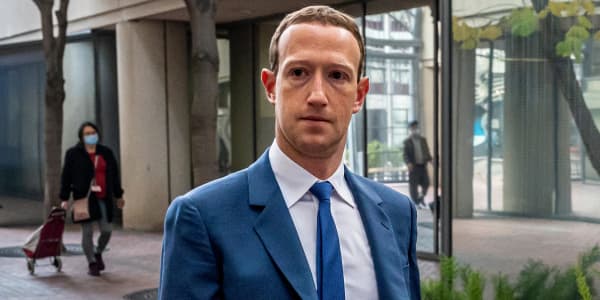Netflix, not surprisingly, is trying something very different to secure new TV shows.
The high-flying company is frequently offering to pay for a television show's production costs and throw in an additional fee on top to own original series, a different strategy than traditional TV networks have employed in the past. These moves, which come during contract talks with production companies, make it very hard for TV networks to compete, according to several people who have worked with Netflix on such deals.
These contracts change the model of how shows are typically licensed and offer way more money up front than networks usually pay to have these shows on their channels. Plus, because Netflix does not have to worry about upsetting advertisers, the streaming giant can give show creators more freedom to create the show they want.
The downside for creators of these new shows is that Netflix then seizes more of the upside on big hits. That means the creators sign away most of their future revenue opportunities, which can mean tens of millions of dollars going to Netflix on the most successful shows.
Five people who have sold TV shows to or have been in negotiations with Netflix said the company typically offers a "cost-plus" model, which covers the cost of production plus more on top. Three of the people said most standard deals get about 30 percent on top of production costs, though bigger studios have been able to negotiate larger percentages. Netflix did not immediately respond to a request for comment.
Compare that with a traditional television licensing deal, in which the network airing the first run of the show pays a fee of only 60 to 70 percent of the show's production cost, according to one executive who negotiates TV deals. The production company then makes money through licensing deals, syndication and other opportunities, especially if the show is a big hit.
How TV shows are sold
Netflix didn't create the cost-plus model. HBO has used similar models in the past for its programming. But Netflix has popularized it. The model is also being adopted by other streaming platforms like Amazon and Apple, sources said, and networks are negotiating more ownership rights into their contracts as well in order to remain competitive when going after new programming.
Many networks license shows from production companies. For example, though new episodes of "Modern Family" air on ABC, the show is actually produced and distributed by divisions of Twenty-First Century Fox.
Through this structure, the production company retains the majority of the rights. These rights can become lucrative, especially as the show hits later seasons.
On a traditional TV network, deals are typically renegotiated after the first few seasons to cover more show production costs, recoup losses on earlier seasons and incorporate additional bonuses. In the rare cases when a show reaches 80 to 100 episodes, it may go into syndication, with past episodes licensed by multiple networks. In the case of "Modern Family," reruns appear on USA Network, some Fox Television stations and other local stations. The majority of revenue still goes to Fox.
Only 2 to 5 percent of shows will make it this far, according to two industry executives. However, another executive said, the syndication success of one or two shows could bankroll 35 other productions.
How Netflix's model differs
Because Netflix's deals are ownership deals, the production company signs away the majority of future revenue opportunities to the company for a larger cut up front.
But even that bigger up-front payment doesn't necessarily mean production companies take home profits after the first season.
That's because, although Netflix buys the show, it typically deducts a fee for distributing the show and bakes this cost into the contract as an "imputed license." For many productions in the first season, this offsets the 30 percent premium over production costs that Netflix pays up front. This leaves the production company at break-even in the best cases, and most times it's still losing money the first year. But it's not losing as much as it would have under a normal TV network licensing deal.

Netflix's contracts also generally require the production company to pay residuals, or fees to actors and crew when episodes air. Those costs have risen about 300 percent, according to one industry executive, as the structure changed to account for replays on streaming networks as well as TV.
In addition, production companies can lose out on significant upside if the show becomes a big hit. The production company typically cedes the majority of worldwide licensing rights to Netflix if another country wants to make a version of that show, for example.
Also, Netflix will typically earn the majority of money from any advertisements, which are mainly restricted to product placement. The production company also gives up most merchandising rights, which have proven fruitful for franchises such as "Star Wars" or shows such as "South Park."
Netflix does guarantee additional bonuses for production companies if the show makes it to a second season and beyond, but it's not as lucrative as if the production company retained the rights.
For example, a producer on a hit Netflix show may earn an additional $2 million if the show gets to the second season, while it could have earned as much as $20 million if that same show were licensed to a network, one industry executive estimated.
Still, for a lot of creators, the Netflix deal is great because they get much closer to full budget to make their shows. On top of that, Netflix has a reputation for being hands-off because it has fewer advertiser demands, and the company is known for treating show creators well.
In other words, show creators get to make the show they envision with less up-front risk, even if that means a lower payday in the future. For many of them, that's enough to choose Netflix.





